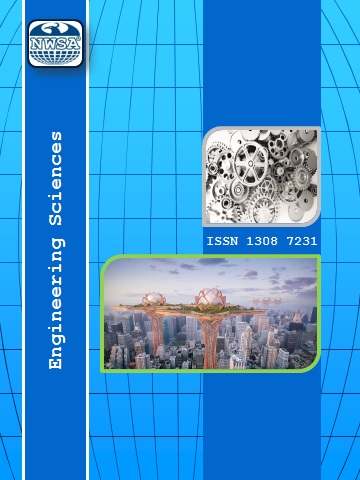References
[1] Akansel, S., (2019). Farkly biçimdeki toplu konut uygulamalarynda konut kullanycy memnuniyeti: Edirne binevler ve Avrupa kent örne?i. Journal of Social, Humanities and Administrative Sciences, 5(17):572-589.
[2] Aykal, F.D., Murt, Ö., Korkmaz, M. ve Acar, B., (2007). Kentsel dönü?üm yakla?ymynda kullanycy memnuniyet analizi. D.Ü. Ziya Gökalp E?itim Fakültesi Dergisi, 8:95-111.
[3] Berköz, L., (2008). Ystanbulda korunakly tek-aile konutlary: Konut kalitesi ve kullanycy memnuniyetinin belirlenmesi. YTÜ Dergisi/a, 7(1):110-124.
[4] Büyüköztürk, E. ve Oral., M., (2024). Kalycy deprem konutlarynda kullanycy memnuniyeti analizi: Osmaniye örne?i. Artium, 12(1):71-84.
[5] Ekinci, C.E., (2024). Bordo Kitap: Mimar ve Mühendisin Yn?aat El Kitaby (13. Basky). Data Yayynlary, Ankara.
[6] Ekinci, C.E., (2024). Bina sertifikalandyrma yöntemleri ve önerilen yeni bir yöntem: Biyoharmolojik uygunluk de?erlendirme. Gazi Üniversitesi Mühendislik Mimarlyk Fakültesi Dergisi, 39(3).
[7] Ekinci, C.E., Bayku?, N., Ay, S., Akgül, M. ve Elyi?it, B., (2020). Bir kamu idari hizmet binasynyn mühendislik özelliklerinin incelenmesi. Journal of Engineering Sciences and Design, 8(1):119-130.
[8] Elyi?it, B. and Ekinci, C.E., (2024a). Investigation of urban transformation process, methods, and techniques: Elazig province sample. Fyrat Üniversitesi Mühendislik Bilimleri Dergisi, 36(1):255-266.
[9] Elyi?it, B. and Ekinci, C.E., (2024b). Examination of urban transformation implementation legislation: Elazy? example. Gazi University Journal of Science Part C: Design and Technology, 36(1):577-585.
[10] Elyi?it, B. ve Ekinci, C.E., (2023). Betonarme yapylarda yapysal ve yapysal olmayan hasarlar ve hasar tespiti üzerine bir ara?tyrma. Engineering Sciences, 18(2):19-42.
[11] Erdo?du, H. ve Erdem., N., (2020). Konut memnuniyetinin syraly lojistik regresyon analizi ile ara?tyrylmasy: Osmaniye ili örne?i. Geomatik Dergisi, 5(2):146-159.
[12] Esen, S. ve Çivici, T., (2022). Kullanycy memnuniyet algylary aracyly?y ile toplu konut projelerinde kalite: Balykesir ili TOKY konutlary örne?i. BAUN Fen Bilimleri Enstitüsü Dergisi, 24(2):448-467.
[13] Glenn, E.N., (1992). From servitude to service work: historical continuities in the racial division of paid reproductive labor. Signs: Journal of Women in Culture and Society, 18:1-43.
[14] U?ma, G. ve Akyncy, N.F., (2021). Konut yapylarynda kullanycy memnuniyeti üzerine kavramsal bir inceleme. The Journal of Academic Social Science Studies, 14(86):295-317.
[15] Gür, M. ve Dosto?lu, N., (2010). Bursadaki alt ve orta gelire yönelik TOKY konutlarynda memnuniyet ara?tyrmasy. Uluda? Üniversitesi Mühendislik-Mimarlyk Fakültesi Dergisi, 15(2):139-153.
[16] Gür, M. ve Erbil, Y., (2018). Konut ve konut çevresine ili?kin kullanycy memnuniyetinin ara?tyrylmasy: Bursa/Yyldyrym. Journal of Social and Humanities Sciences Research, 30(5):4135-4148.
[17] Güremen, L., (2011). Müstakil villa tipi konutlaryn kullanycy memnuniyetini belirleyen özellikleri: Ni?de kenti özelinde bir ara?tyrma. Engineering Sciences, 6(3):24-64.
[18] Güremen, L., (2016). Konut ve yerle?im alany kullanycy algysynyn memnuniyet ve tercih davrany?yna etkisi üzerine bir ara?tyrmada Amasya örne?i. Technological Applied Sciences, 11(2):24-64.
[19] Hatipo?lu, B., (2015). Yerel yönetimler yoluyla üretilmi? toplu konut projelerinde kullanycy memnuniyeti: Konya örne?i. KTO Karatay üniversitesi, Fen Bilimleri Enstitüsü, Yüksek Lisans Tezi, Konya.
[20] Kellekci, Ö.L. ve Berköz, L., (2006). Konut ve çevresel kalite memnuniyetini yükselten faktörler. YTÜ Dergisi/a, Cilt:5(2):167-178.
[21] Kline, R.B., (1996). Eight-month predictive validity and covariance structure of the Alcohol Expectancy Questionnaire for Adolescents (AEQ-A) for junior high school students. Journal of Studies on Alcohol, 57(4):396405.
[22] Lacobucci, D., (2010). Structural equations modeling: fit yndices, sample size, and advanced topics. Journal of Consumer Psychology, 20(1):90-98.
[23] Öztürk, M. ve Yyldyrym, K., (2023). Konut büyüklü?ü ve oda sayysynyn kullanycy tercihleri üzerindeki etkisi. Modular Journal, 6(1):34-49.
[24] Suzan, T. ve Yaman., K.,(2021). TOKY konutlarynda kullanycy memnuniyeti ara?tyrmasy: Karabük örne?i. Euroasia Journal of Social Sciences & Humanities, 8(3):45-59.
[25] Thomas, A. ,(2003). A glosorry of regenation and local economic devolopmen. Local Economic Stratepy Center, Manchester.
[26] Yyldyz Kuyrukçu, E. ve Ulusoy., M., (2014). Yeni konutla?ma e?ilimi olan dy?a kapaly konut yerle?melerinde kullanycy memnuniyeti analizi: Konya örne?i. Selcuk University Journal of Engineering Sciences, 2(3):1-12.
[27] Yüksel, H., (2014). Sosyal politika unsuru olarak Toplu Konut Ydaresi (TOKY) uygulamalary: Isparta Yli Çünür ve Akkent Mahalleleri Toplu Konut Ydaresi Ba?kanly?ynca yapylan konutlarda ikamet eden konut sakinlerine yönelik bir alan ara?tyrmasy. Süleyman Demirel Üniversitesi, Sosyal Bilimler Enstitüsü, Doktora Tezi, Isparta.
[28] Li, S. and Song, Y., (2009). Redevelopment, displacement, housing conditions and residential satisfaction: A study of Shanghai. Environment and Planning A, 41(5):1090-1108.
[29] Lee, H.J., Goss, R.C., and Beamish, J.O., (2007). Influence of lifestyle on housing preferences of multifamily housing residents. Housing and Society, 34(1):11-30. Doi: 10.1080/08882746.2007.11430542.
[30] Salleh, A.G., (2008). Neighbourhood factors in private low-cost housing in Malaysia. Habitat International, 32(4):485-493. Doi: 10.1016/j.habitatint.2008.01.002.
[31] Teck-Hong, T., (2012). Housing satisfaction in medium- and high-cost housing: The case of Greater. Kuala Lumpur, Malaysia. Habitat International, 36:108-116. Doi: 10.1016/j.habitatint.2011.06.003.
[32] Amerygo, M. and Aragones, J.I., (1997). A theoretical and methodological approach to the study of residential satisfaction. Journal of Environmental Psychology 17:4757. Doi: 10.1006/jevp.1996.0038.
[33] Greenberg, M.R., (2009). Neighborhood quality and the older elderly: theory and two pilot tests. Human Ecology Review, 16 (2):184-194.
[34] Wilson-Doenges, G., (2000). An exploration of sense of community and fear of crime in gated communities. Environment and Behavior, 32(5):597-611.
[35] Sam, N., Bayram, N., and Bilgel N., (2012), The perception of residential environment quality and neighbourhood attachment in a metropolitan city: A study on Bursa, Turkey. Canadian Journal of Humanities and Social Sciences, 1(1):22-39.
[36] Qiao, S., Han, N., Zhou, J., and Li, R.H., Jin, C., and Gutierrez, L.A., (2018). Social Mix: A familiaritybased and preference-aware location suggestion approach. Engineering Applications of Artificial Intelligence 68:192204. Doi:10.1016/j.engappai.2017.11.006
 +90(535) 849 84 68
+90(535) 849 84 68 nwsa.akademi@hotmail.com
nwsa.akademi@hotmail.com Fırat Akademi Samsun-Türkiye
Fırat Akademi Samsun-Türkiye
